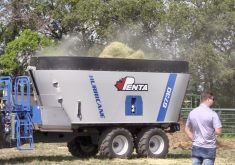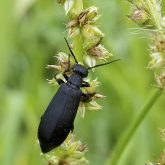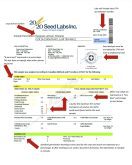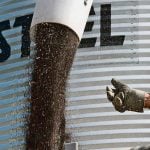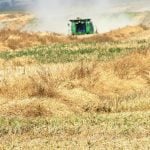Hay and forage export markets have been hit hard in the past few years.
In 2023 the decline was caused by numerous challenges in global trade. Shipping disruptions lingering from the pandemic, the war in Ukraine, commodity inflation, droughts in the U.S., Canada and Europe in 2022, and the U.S. dollar strengthening all contributed. This year, it’s due to the high dollar demand in Japan and South Korea being down.
“Milk prices are low in those countries and they are just buying less imported hay,” said Josh Callen, a market research analyst and owner of The Hoyt Report. “Buyers are more price sensitive than quality sensitive and they are looking for deals.”
Read Also

Canadian Forage and Grassland Association conference highlights forage innovation and collaboration
The event, held in New Brunswick, will look at how technology is reshaping grassland and forage management.
He added that the U.S. dollar versus the yen has started to come down but the yen is still weak and the Chinese have pulled back sharply on their buying.
“They don’t buy much from Canada, but they are the biggest buyer in the U.S. and so far, the volumes they are taking are down by about a third,” he said. “They overbuilt their dairy industry and now, with low milk prices and a poor economy, they are culling cows and feeding less imported hay. This means hay prices in the U.S., especially in Washington, are down sharply, like to 2018 levels.”
- RELATED: Comparing tame forages under grazing
Issues
Callen said there are several issues Canadian exporters should be aware of right now including that prices for first-cut timothy in Washington were very strong.
“It was like competition among export buyers for the product drove prices more than the demand from the end-users,” he said. “This higher-priced hay has been slow to move.”
While some U.S. exporters may get more desperate for orders and drop their prices, some exporters may also pivot that hay to the domestic horse market and hurt those prices.
“Also, word in Washington is getting around that timothy seed sales for next year were very strong; some seed dealers even sold out,” said Callen. “I would be very cautious in the timothy market. Look to established relationship customers to try to move hay.”
- RELATED: Picking a perennial forage blend
During years like this, it is a good idea for exporters to have multiple outlet channels for their hay. For example, in the U.S., the market for big bales is down sharply while the market for small square bales for horses has held up better. Demand in New York and Florida, which take a lot of timothy from Alberta, is still pretty good.
Callen added that, from the U.S. perspective, the export market may be shrinking. All the challenges seem to have spurred more buyers to source forage from more local sources, he said.
“That was the big question this year: ‘Would the export market bounce back?’ And so far, it has not. Time will tell, but it appears the export market will be slower for the time being.”
Exports at CFGA conference
Callen is a regular speaker at the Canadian Forage and Grassland Association’s (CFGA) annual conference and he will return to this year’s conference, which is taking place December 3 to 6 in Guelph, Ont. “Roots to Success: The Foundation of Resilient Agriculture” is the theme for the conference, which celebrates the important environmental and economic role forages and grasslands play in Ontario, across the country and around the globe.
During his session, Callen will provide an analysis of the current status of the global forage market, including pricing, volumes and market trends. It is just one of the activities focused on exports at the conference.
Brand new for this year is the Hay Exporter and Marketer Social on December 5 from 6 to 8 p.m. This event is especially for those interested in hay marketing and exports, and will provide an opportunity to connect with key people with industry knowledge, learn about hay marketing and exports, and discuss the opportunities and challenges in the hay marketing sphere. The event is free to those registered for the conference and costs $30 for those not registered. Food and drink are included with the ticket purchase.
Another learning opportunity for hay marketers and exporters is the popular pre-conference tour. This year, the tour is being held in conjunction with the Ontario Forage Council’s popular Forage Focus on Dec. 6 when those in attendance will tour businesses involved in hay marketing and exports, hay equipment and more.
For more information about the CFGA conference visit the CFGA conference website.



